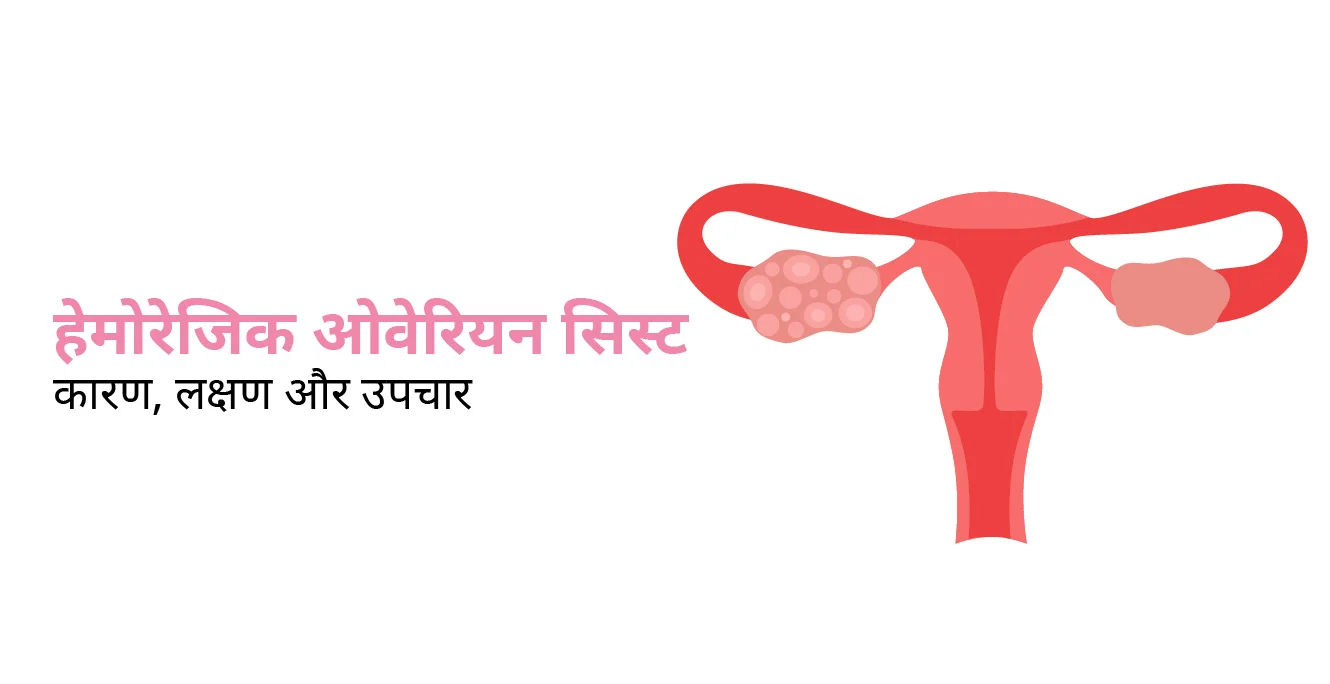
Bulky Uterus with Fibroids: Causes, Symptoms, Treatments & Complications

Table of Contents
According to research reports, 20% or 80% of women typically develop uterine fibroids at some point of time before 50 years of age. Also, uterine fibroids are very likely to occur between the early 40s and the 50s. Therefore, it is important to go for regular routine check-ups and get diagnosed early to receive prompt and effective treatment for a bulky uterus with fibroids.
What is a Bulky Uterus?
A bulky uterus with fibroids is a condition in which the uterus grows or becomes bulky due to the presence of fibroid tumours. Fibroids are noncancerous growths that are most commonly found in the uterus. Many women with fibroids have no symptoms, but others may have a variety of symptoms and consequences. A big uterus is another term for a bulky uterus.
There are several factors that might cause a bulky uterus, which may or may not be accompanied by symptoms. Understanding the reasons for a large uterus and looking for potential and effective treatment options is crucial to effectively manage this condition. In this blog, we aim to provide a comprehensive overview of the causes, symptoms, treatments, and potential consequences associated with a bulky uterus.
Causes of Bulky Uterus
Uterine enlargement, often known as a bulky uterus, is described as an increase in uterine size that is more than a normal uterus. An enlarged or bulky uterus can be the result of a variety of conditions, with uterine fibroids being one of the most common. Fibroids, also known as uterine leiomyomas, are benign growths that start forming in the uterine lining, also referred to as the inner uterus muscle wall.
Although the exact cause of a bulky uterus is unknown, several factors have been connected to its formation. Hormonal factors, namely oestrogen and progesterone, typically play a significant role in the development of a bulky uterus. Their growth may be influenced by genetic predisposition as well as abnormalities of hormone levels. An enlarged or bulky uterus can be caused by a number of reasons, including:
- Pelvic Inflammatory Disease (PID): Infections can cause chronic inflammation of the reproductive organs, resulting in uterine enlargement.
- Pregnancy: The uterus naturally expands to accommodate the growing fetus during pregnancy, resulting in temporary uterine enlargement.
- Adhesions: The growth of scar tissue within the uterus or between the uterus and surrounding organs can result in uterine enlargement.
- Hormonal factors: Oestrogen and progesterone, two hormones involved in menstrual cycle regulation, increase the abnormal growth or formation of fibroids.
- Genetic factors: Having a family history of fibroids enhances your chances of getting them.
- Adenomyosis: Adenomyosis occurs when the endometrium (tissue lining the uterus) grows into the uterine muscular wall, causing it to enlarge in size.
- Uterine Polyps: Polyps are abnormal tissue growths on the uterine lining that can make the uterus appear bulky and large compared to the normal size of the uterus.
- Endometrial Hyperplasia: It is a condition distinguished by excessive endometrial growth in the uterus, leading to an enlarged and bulky uterus.
Symptoms of a Bulky Uterus with Fibroids
Fibroids may not cause any symptoms in many cases. However, when symptoms do occur, they can vary in intensity and presentation. Also, the symptoms may vary from one patient to another based on the severity of the condition. Common symptoms may include:
- Heavy or prolonged menstrual periods
- Painful periods
- Pelvic pain or pressure in the pelvic region
- Frequent urination
- Constipation
- Backache or leg pain
- An enlarged abdomen
- Pain during sexual intercourse
Diagnosis of a Bulky Uterus with Fibroids
If a bulky uterus with fibroids is suspected, a specialist might run a thorough diagnosis in order to detect the severity. The specialist will recommend several diagnostic tests to confirm the severity of the condition. A standard diagnosis for a bulky uterus may include:
- Physical examination: The expert will put slight pressure with the finger on the lower abdomen area to check the tenderness and swelling.
- Pelvic examination: A bulky uterus can be diagnosed during a pelvic examination when unusual changes get noticed by the expert.
- Diagnostic tests: Typically, to assess the severity and damage, the expert will recommend imaging tests such as ultrasound, MRI, or hysteroscopy. In rare cases, a biopsy is also advised to rule out other critical conditions.
Treatments for Bulky Uterus
The type of treatment is determined by the expert based on various factors, such as the intensity of symptoms, the size and location of the fibroids, plans for future pregnancies, and the overall health of the patient. The variety of treatment options includes:
Medications:
Hormonal birth control pills can help control excessive bleeding and relieve symptoms. GnRH agonists can temporarily reduce the size and number of fibroids.
Keeping under observation:
Monitoring the fibroids without intervening immediately, especially if they are small, not producing major discomfort, or menopause is approaching.
Minimally invasive procedure:
With evolving medical technology, there are multiple minimally invasive procedures available to treat a bulky uterus. Some of the techniques are:
- Uterine artery embolisation: During this method, an expert cuts off the blood supply to the fibroids, causing them to shrink and reduce in size and number.
- Hysteroscopic resection: Removal of fibroids using a thin catheter attached with a tiny camera at the end, which is probed through the vaginal cavity to reach the affected region.
- Myomectomy: It is also known as a cleaning procedure. During this technique, fibroids are removed through surgical intervention while keeping the uterus in place. This procedure is suitable for women who want to have more children in the future.
- Laparoscopic surgery: It is a keyhole surgery, where an expert executes the procedure by making a small incision in order to remove the fibroids present in the uterus.
Hysterectomy:
This method is usually advised in extreme situations or when a future pregnancy is no longer desired. During this procedure, the expert removes the uterus completely.
Prevention Tips for Bulky Uterus
There is no specific diet plan that can treat a bulky uterus. But, remember that maintaining a healthy lifestyle in general, including regular physical activity, clean eating, and adequate sleep, is critical for improving reproductive health. Here are a few tips that can help you prevent and manage the symptoms of a bulky uterus with fibroids:
Increase fibre quantity:
Fibre aids in the regulation of bowel movements and the reduction of the risk of constipation, which can result in pressure in the lower abdomen region. Including high-fibre items in your diet, such as whole grains, legumes, fruits, vegetables, and nuts, can be beneficial for females with fibroids and bulky uterus.
Keep your body well hydrated:
Drink plenty of water throughout the day to stay properly hydrated. Water promotes general health and helps keep biological systems working smoothly.
Eat seasonal fruits and vegetables:
A colourful range of fruits and vegetables should be included in your diet because they are high in critical nutrients, antioxidants, and fibre. Make an effort to include at least five servings of fruits and vegetables in your day.
Additional supplements:
Discuss with your doctor regarding the potential benefits of supplements such as folic acid, vitamin D, and omega-3 fatty acids, which may help boost your overall fertility health.
Limit consumption of caffeine and alcohol:
Restrict your caffeine and alcohol consumption, as high levels of these chemicals may have a negative impact on fertility health.
Complications of a Bulky Uterus with Fibroids
Uterine fibroids are benign growths, but in some cases, they can lead to various complications, such as:
- Excessive or heavy menstrual bleeding: Heavy or prolonged menstrual bleeding caused by a large number of fibroids or those positioned inside the uterine cavity might result in anaemia.
- Infection: Uterine fibroids can cause inflammation, resulting in vaginal infection and infection in other parts of the female reproductive system.
- Mild to moderate pain: At times, some patients may complain about pelvic pain, pressure, and discomfort in the lower abdomen area. This can also lower a woman’s quality of life.
- Infertility or pregnancy complications: Uterine fibroids can interfere with women’s fertility and can also result in pregnancy complications such as miscarriage, premature labour, or placental abruption, depending on their size, numbers, and location of the abnormal growths (fibroids).
Takeaway
An enlarged uterus with fibroids, also referred to as a bulky uterus, can be quite uncomfortable and may have a negative impact on a woman’s fertility health. While many women with fibroids experience no symptoms, some may require therapy to relieve symptoms or resolve issues. Seeking immediate medical guidance and discussing treatment alternatives is critical for optimal fibroids management and can also help treat them effectively. Individual circumstances and preferences determine the treatment options one should undergo, which range from conservative measures such as medications to surgical intervention when necessary. Women may make informed decisions and work together with fertility experts to ensure appropriate management of a bulky uterus with fibroids by knowing the reasons, recognising the symptoms, and investigating the available treatment options. If you are looking for an effective treatment for a bulky uterus with fibroids and desire pregnancy, consult our fertility expert today. You can book a free consultation with our fertility expert by giving us a call or by Visiting our Fertility Centers.
FAQs:
Can I Get Pregnant With a Bulky Uterus?
There is nothing to worry about when getting pregnant with a bulky uterus. If you consult an experienced fertility specialist and get the right, effective treatment for a bulky uterus, you will be able to achieve a healthy and confirmed pregnancy.
Does a Bulky Uterus Get Cured With Medication?
It depends on the severity of the condition. The type of treatment is determined by the expert after a thorough diagnosis. If the symptoms of a bulky uterus are mild, they can be managed with medication only.
What is the Surgery for a Bulky Uterus?
The most common surgeries for a bulky uterus with fibroids are myomectomy and hysteroscopy. Myomectomy is generally advised for patients who have a desire for future pregnancies. Whereas, hysteroscopy is a removal of the uterus that is recommended for patients who don’t have any plans to conceive children in the future.
Can a Bulky Uterus Cause Pregnancy Complications?
Yes, a bulky uterus has an increased risk of resulting in pregnancy complications. Some of the common complications are:
-
- Premature delivery
- Torsion of the uterus
- Excessive bleeding
- Implantation failure
- Seperation of the placenta.
Our Fertility Specialists
Related Blogs
To know more
Birla Fertility & IVF aims at transforming the future of fertility globally, through outstanding clinical outcomes, research, innovation and compassionate care.
Had an IVF Failure?
Talk to our fertility experts

 Our Centers
Our Centers











